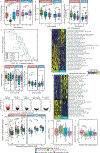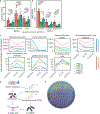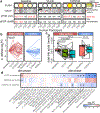Caloric restriction disrupts the microbiota and colonization resistance
- PMID: 34163067
- PMCID: PMC8959578
- DOI: 10.1038/s41586-021-03663-4
Caloric restriction disrupts the microbiota and colonization resistance
Abstract
Diet is a major factor that shapes the gut microbiome1, but the consequences of diet-induced changes in the microbiome for host pathophysiology remain poorly understood. We conducted a randomized human intervention study using a very-low-calorie diet (NCT01105143). Although metabolic health was improved, severe calorie restriction led to a decrease in bacterial abundance and restructuring of the gut microbiome. Transplantation of post-diet microbiota to mice decreased their body weight and adiposity relative to mice that received pre-diet microbiota. Weight loss was associated with impaired nutrient absorption and enrichment in Clostridioides difficile, which was consistent with a decrease in bile acids and was sufficient to replicate metabolic phenotypes in mice in a toxin-dependent manner. These results emphasize the importance of diet-microbiome interactions in modulating host energy balance and the need to understand the role of diet in the interplay between pathogenic and beneficial symbionts.
Conflict of interest statement
Competing interests
PJT is on the scientific advisory boards for Kaleido, Pendulum, Seres, and SNIPRbiome; there is no direct overlap between the current study and these consulting duties. All other authors have no relevant declarations.
Figures













Comment in
-
The gut microbiome in feast and famine.Nat Rev Gastroenterol Hepatol. 2021 Nov;18(11):749-750. doi: 10.1038/s41575-021-00514-5. Nat Rev Gastroenterol Hepatol. 2021. PMID: 34429532 No abstract available.
References
-
- Spranger L et al. Thrifty energy phenotype predicts weight regain – results of a randomized controlled trial. Preprint at 10.1101/2021.03.25.21254300v1 (2021). - DOI

